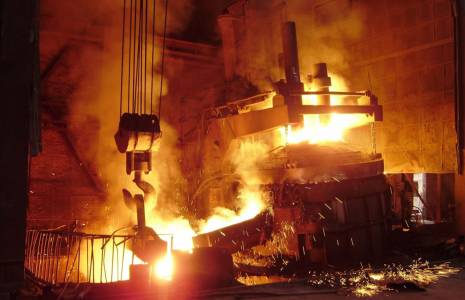Description
Steel: The Ultimate Material for Strength and Versatility
Steel, an alloy primarily composed of iron and carbon, is a cornerstone of modern civilization. Its unmatched strength, durability, and versatility have made it indispensable across countless industries and applications. This description delves into the diverse world of steel, highlighting its key properties and applications.
Unparalleled Strength and Durability:
Steel's inherent strength is derived from the robust metallic bonds within its iron-carbon structure. This strength translates into exceptional durability, resisting wear, tear, and deformation under significant stress. Its high tensile strength allows it to withstand significant pulling forces, while its compressive strength enables it to resist crushing. This combination of properties makes steel ideal for applications demanding high load-bearing capacity and longevity.
Key Strength Characteristics:
- High Tensile Strength: Ability to withstand significant pulling forces before failure.
- High Compressive Strength: Ability to resist crushing forces.
- High Yield Strength: Point at which the material begins to deform permanently.
- Excellent Fatigue Resistance: Ability to withstand repeated cycles of stress without failure.
Versatility Across Industries:
Steel's adaptability is remarkable. Through varying the composition (alloying elements like chromium, nickel, manganese, etc.), manufacturing processes (casting, forging, rolling, etc.), and heat treatments, steel's properties can be tailored to specific applications. This versatility has led to its widespread use in:
- Construction: From skyscrapers and bridges to residential buildings and infrastructure, steel provides the structural integrity necessary for large-scale projects.
- Automotive: A key component in vehicle bodies, chassis, and engine parts, offering strength, safety, and durability.
- Manufacturing: Used extensively in machinery, tools, and industrial equipment, providing robust performance and reliability.
- Energy: Essential in pipelines, power generation equipment, and renewable energy infrastructure.
- Aerospace: Used in aircraft components where high strength-to-weight ratio is critical.
- Medical: Found in surgical instruments, implants, and medical equipment requiring high hygiene standards and biocompatibility.
Types of Steel: A Wide Spectrum of Properties:
The diverse world of steel includes numerous grades, each with unique properties:
- Carbon Steel: The most basic form, offering a balance of strength, hardness, and weldability.
- Alloy Steel: Enhanced properties through the addition of alloying elements, such as increased strength, corrosion resistance, or toughness. Examples include stainless steel (chromium-rich) and high-strength low-alloy steel (HSLA).
- Stainless Steel: Highly resistant to corrosion and staining, making it suitable for food processing, medical applications, and architectural elements.
- Tool Steel: Exceptional hardness and wear resistance, ideal for cutting tools, dies, and molds.
- High-Speed Steel: Retains hardness at high temperatures, essential for high-speed machining applications.
Sustainability Considerations:
While steel production has an environmental footprint, significant advancements in recycling and sustainable production methods are minimizing its impact. Steel is highly recyclable, with a high recycling rate contributing to resource conservation and reduced emissions.
Conclusion:
Steel's strength, durability, and versatility continue to make it an irreplaceable material across a vast range of industries. Its ongoing development and innovation ensure its continued relevance in shaping the future.
